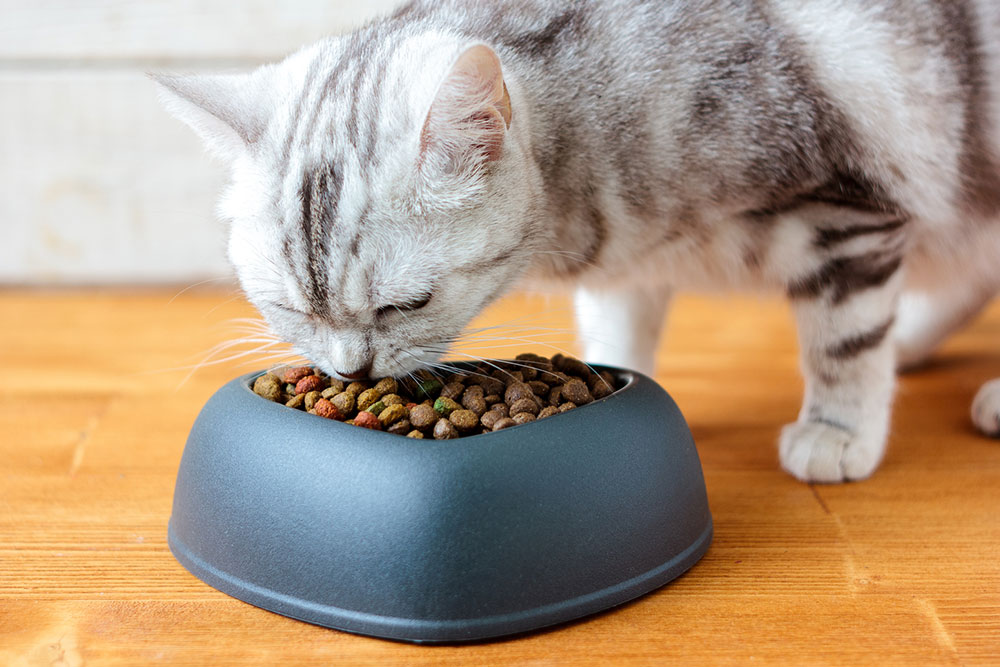Top 10 Black Friday 2023 Deals to Expect on Cat Food

Choosing the right cat food is important to ensure the health and happiness of one’s feline companion, and the best time for pet owners to save on pet supplies is just around the corner. Black Friday 2023 is set to offer a once-in-a-year opportunity to score fantastic deals on cat food. Drawing from past year’s trends, here are some Black Friday discounts on the top 10 cat food categories one can expect to see this year.
1. Dry cat food (kibble)
Dry cat food, often called kibble, is a popular choice among pet owners for its convenience and longer shelf life. Popular brands like Whiskas, Royal Canin, Purina ONE, and Blue Buffalo offer a variety of dry cat food options. Retailers such as Petco, PetSmart, Chewy, and Amazon stock these brands. During Black Friday 2023, shoppers can look for major discounts on dry cat food, along with bundle deals and coupons to maximize savings. Last year, Inaba, Greenies, and Temptations offered up to 50% off on cat treats. Similarly, Chewy offered about 46% off on 20-pack lickable and creamy cat treats, including chicken, tuna, and scallop flavors.
2. Canned cat food
Canned or wet cat food is known for its high moisture content and different flavors. Cat food from brands like Wellness, Fancy Feast, Tiki Cat, and NUTRO may be discounted on their brand websites as well as in stores like Walmart, Target, Kroger, and specialty pet stores. Last year’s Black Friday trends include discounts up to 40% on wet cat food as well as some Buy One Get One (BOGO) deals and limited-time promotions.
3. Semi-moist cat food
Semi-moist cat food offers a middle ground between dry kibble and wet canned food, and it usually resembles small meaty chunks or bits. One can find these products at well-stocked pet supply stores, online retailers, and brands like Meow Mix and 9Lives. Last year, Chewy, for example, offered Black Friday deals of up to 50% off on select cat food and treats, including semi-moist food. While discounts on this type of cat food may be limited compared to other types, it is worth keeping an eye out for any special offers or bundle deals during Black Friday 2023.
4. Raw cat food
Raw cat food is made from uncooked, raw ingredients such as meat, organs, fish, and sometimes vegetables. It is often considered a more natural and biologically appropriate food for cats, resembling what they might eat in the wild. Raw cat food is available in frozen and refrigerated options, and needs to be thawed before serving. Apart from direct discounts of up to 50%, Chewy gave an additional $30 e-gift cards on purchases above $100 and free delivery during Black Friday last year, making it an excellent opportunity for cat owners to stock up on this nourishing cat food option.
5. Freeze-dried cat food
Freeze-dried cat food is a type of raw food that undergoes a freeze-drying process to remove moisture while preserving the nutritional content. This can be stored at room temperature for extended periods. Raw cat food is typically refrigerated or frozen, while freeze-dried cat food is dry and shelf-stable. Both these types are minimally processed and are preferred by pet owners seeking premium nutrition. Brands such as Primal, Whiskas, Stella & Chewy’s, and Instinct are popular in this category. Freeze-dried cat foods can be found at specialty pet stores like PetSmart and Petco and online retailers like Chewy and Amazon. Going by past year’s trends, shoppers may expect to save up to 25% or even more on raw and freeze-dried cat food during Black Friday sales.
6. Grain-free cat food
Grain-free cat food is sought after by pet owners looking to avoid common allergens. Brands like Wellness CORE, Merrick, and Natural Balance offer grain-free options. Last year, during shopping season, Blue Buffalo gave nearly 40% off on its crunchy grain-free cat treats. Pet owners can look for similar discounts and possibly more offers on bulk purchases from pet supply stores as well as online retailers during Black Friday 2023.
7. Limited ingredient cat food
Limited ingredient cat food is formulated for cats with food sensitivities or allergies, offering a simplified ingredient list. Brands like Natural Balance and Merrick excel in this category. During Black Friday last year, pet owners enjoyed discounts up to 30% on limited ingredient cat food from these brands.
8. Organic cat food
Organic cat food is made from certified organic ingredients and is popular among pet owners seeking the highest quality nutrition for their feline companions. Brands like Castor & Pollux and Newman’s Own offer organic cat food options. One can find these products at specialty pet stores, health food stores, and online retailers. One may get Black Friday discounts of up to 20% on organic cat food. Open Farm Pet, for example, enticed pet owners with a 20% off on any orders as well as 25% off on auto-orders, up to $150 last year.
9. Health-specific cat food
While discounts for health-specific cat food are less common, pet supply stores and online retailers may offer limited-time promotions during Black Friday. This may range from hairball control, sensitive stomach, and senior cat food to veterinarian-advised foods specific for kidney disease and food allergies. Brands like IAMS, Blue Buffalo, Royal Canin, NUTRO, and Natural Balance may give site-wide discounts. For instance, last year, PetHonesty, Zesty Paws, and Purina Pro Plan offered 40% off on vitamin supplies specific for cats. Moreover, Feline Greenies offered 9% off on its dental treats for cats.
10. Kitten food
Specifically formulated for the needs of growing kittens, brands like IAMS, Royal Canin, and Purina Pro Plan offer specialized kitten food. During Black Friday last year, various brans and retailers offered discounts of up to 35% on premium kitten dry and wet food, often with convenient same-day or free delivery options.










